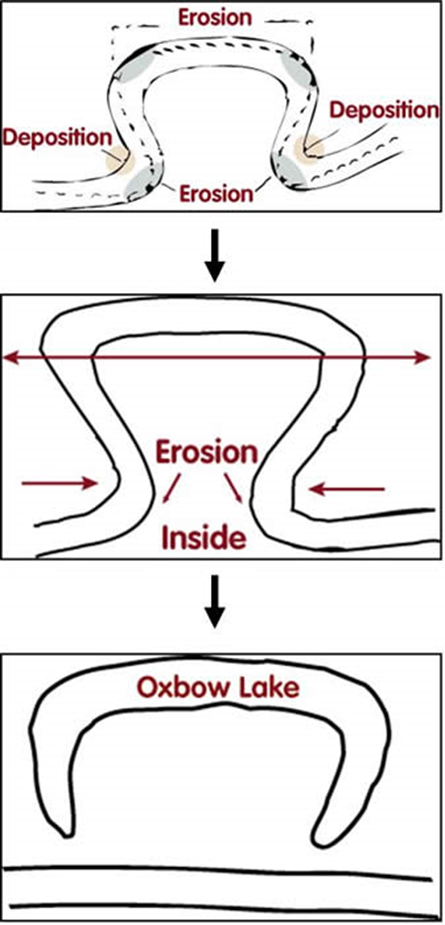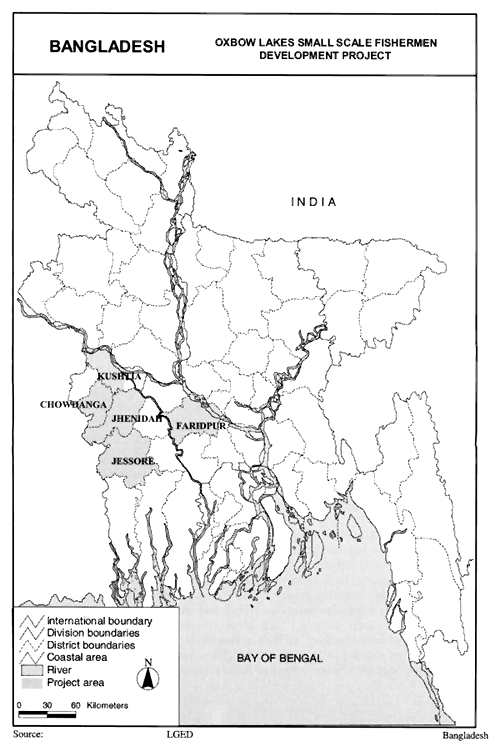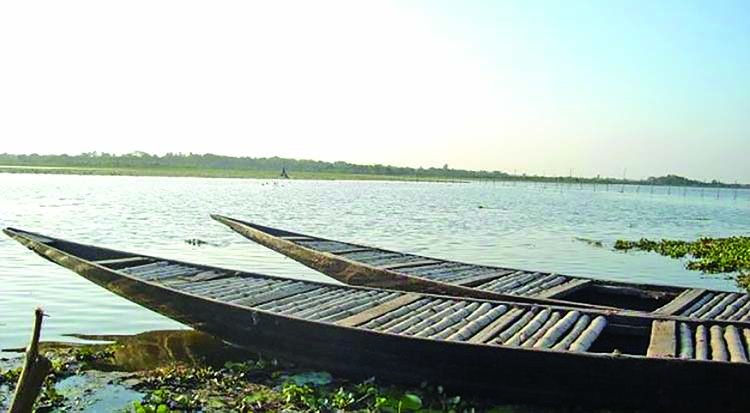Baors
Baors (in Bangla) or Oxbow Lakes (in English) are one of the very common inland water bodies in Bangladesh. There are about six hundred oxbow lakes (created by changing or dying river courses) in the three greater districts of Jessore, Kushtia, and Faridpur, with many of these concentrations in the greater Jessore district. These oxbow lakes stretched from 282 hectares to the lowest 10 hectares. The highest area of Baors is contradictory because, in the rainy season, the area increases a lot.
Baor
An oxbow lake (Baor) is a dead section of a river created when the river changed course. A Baor is normally still part of the flood plain of the river, to which inlets and outlets connect. By screening the inlets and outlets, Baor can be converted into a culture-based fishery. A Baor receives its nutrients from flood waters that flow into it, bringing fertilizer runoff, animal manure, and other organic matter. The name ‘Oxbow’ refers to its shape and is called oxbow lake (in Bangla, ‘Baor’).
Historical Background
Baors were present in Bangladesh in the 17th century and may be ancient further. At the beginning, Baors were the properties of Zamidars (landlords) during the British colonial days (1757–1947) and became government property after the abolition of the Zamidary system through a land settlement act in 1951. They were leased to private individuals or cooperatives through open auctions. Individual leaseholders with a usual short-term lease contract (for three years) were rarely enthusiastic to invest in stocking or fish resource upkeep in such vast and extensive water bodies with huge overseeing or enforcement costs in an open access system. In most cases, the lease of these waterbodies was taken as a prestige possession and a demonstration of economic might in the socio-economic setting of the countryside. But at present, these Baors are all under the GOB (Govt. of Bangladesh) and take some initiatives to manage this potential water body.
Formation of an Oxbow Lake

Baor is mainly a dead river, creating a free-standing body of water for fish culture. Baor, the horseshoe-shaped oxbow lake, was created when the meandering rivers changed their courses; part of the old course got silted up and cut off from the mainstream channel by depressing and filling with water. A baor apparently looks like a lake, but unlike lakes, it remains connected to the original river through channels during monsoons.
Oxbow lakes are a good example to highlight the close connections that are often formed between river channels, lakes, and wetlands. They are formed when a river naturally changes course as it erodes the underlying substrate. As the river channel meanders (or bends) through its course, water moves more rapidly on the outside bend when compared to the inside, which causes erosion of the outside bank. This produces sediment material that is deposited on the inside of the of the bend. When the outside bend is completely eroded away, the river channel breaks through the base of a loop, which cuts off the meander, thereby isolating a section of the old river channel. This section forms the oxbow lake.
Bangladesh contains approximately 5,500 ha of Oxbow Lakes (‘baors’). Most are situated in the southwest part of the country, mainly in the five districts of Chuadunga, Faridpur, Jessore, Jhenaidah, and Kushtia.
Important Features of Baor
The common and important features of Baors are given below:
- Baors appears as a saucer-shaped depression.
- They range in size from half a square kilometre to 13 square kilometers.
- Baors are more stagnant than beels, and they generally have water throughout the year.
- Baors receive water only when the parent river is in high flood. Usually, during the wet season, a baor receives local rainwater.
- There are often many villages around a baor. Consequently, it is difficult to exclude the people living around a baor from drawing benefits from that baor.
- Baor are commonly rich in aquatic biodiversity with a greater proportion of fisheries resources.
- The highest area of baors is contradictory because in the rainy season the areas increase a lot. These are common property of these water bodies, which have a high potential o production of fish resources.
Fisheries Resources of Baor
According to Jahan (1993) the fisheries resources of Baor are-
| SL | Groups | No. of species |
| 1 | Fishes | 72 |
| Cultured fish | 8 | |
| Captured fish | 64 | |
| 2 | Annelids | 3 |
| 3 | Arthropods | 20 |
| 4 | Mollusks | 8 |
| 5 | Amphibians | 3 |
| 6 | Reptiles | 13 |
| 7 | Aquatic macrophytes | 22 |

Figure 1: Location of baors
Baors of Bangladesh:
List of Baor
| District: Jhinaidha | |||
| Sl no. | Name of Upazila | Name of Baor | Area (in hector) |
| Moheshpur | Nasti | 27 | |
| Moheshpur | Sastaaar (with Raisa Beel) | 40 | |
| Moheshpur | Porapara | 73 | |
| Kaliganj | Sarjad | 4 | |
| Harinakundu | Kayetpara | 44 | |
| Sadar | Saganna | 21 | |
| District: Chuadanga | |||
| Sl no. | Name of Upazila | Name of Baor | Area (in hector) |
| 7. | Jibannagar | Benipur | 19 |
| 8. | Sadar | Bandardah | 15 |
| 9. | Sadar | Uzalpur | 14 |
| 10. | Jibannagar | Marufdia | 11 |
| District: Jessore | |||
| Sl no. | Name of Upazila | Name of Baor | Area (in hector) |
| 11. | Sadar | Kalkhali | 19 |
| 12. | Sadar | Bokbhara | 62 |
| 13. | Sadar | Hamidpur | 4 |
| 14. | Sadar | Jhampa | 57 |
| 15. | Katuar | 26 | |
| 16. | Khedapara | 23 | |
| 17. | Harihornagar (Jessore) | 7 | |
| 18. | Bakra | 10 | |
| 19. | Bahadurpur | 89 | |
| 20. | Kannyadaha | 16 | |
| District: Faridpur | |||
| Sl no. | Name of Upazila | Name of Baor | Area (in hector) |
| 21. | Boalmari | Chaitorkol Beel | 20 |
| 22. | Boalmari | Mariharnagar Baor (Faridpur) | 5 |
| District: Kushtia | |||
| Sl no. | Name of Upazila | Name of Baor | Area (in hector) |
| 23. | Sadar | Kaliganga Badalbasha | 11 |

Figure 2: Baor of Bangladesh (dailyasianage)
A total of 5488 ha of oxbow lakes in Bangladesh have recently gained importance as potential fishery resources. The growing need to utilise the resource to its fullest potential requires consideration of cage culture by resource-poor fishing communities as a complement to existing stock enhancement programmes.
References
- Banglapedia (2024) Baor of Bangladesh. [Accessed on 19 August, 2024] https://en.bdfish.org/2010/08/baors-oxbow-lakes/
- Halim A, Sharmin S, Rahman H, Haque M, Rahman S, Islam S (2018) Assessment of water quality parameters in baor environment, Bangladesh: A review. International Journal of Fisheries and Aquatic Studies, 6(2), 269-263